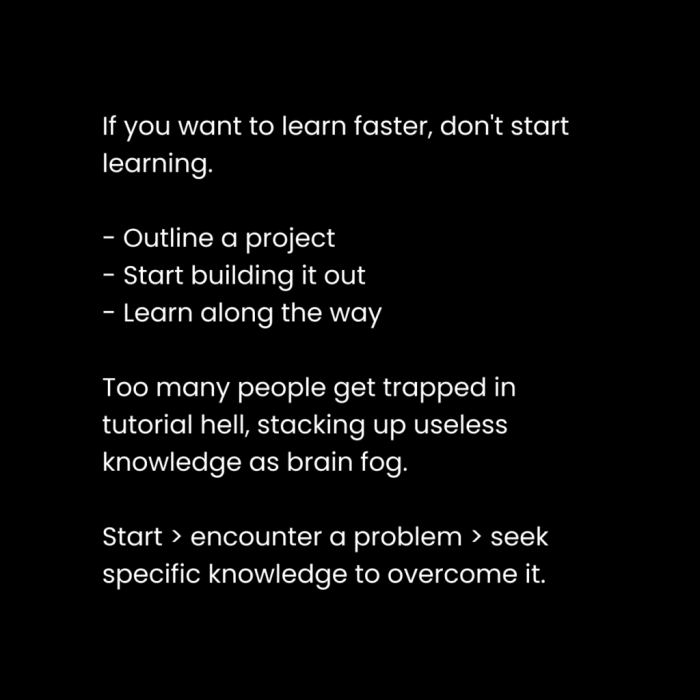Reverse plank to strengthen your core and lower body is a fantastic exercise for building core strength and lower body stability. This comprehensive guide delves into everything you need to know about performing reverse planks effectively, from proper form and variations to progressive exercises and incorporating them into a workout routine.
We’ll explore different variations for various fitness levels, safety precautions, and how to modify the exercise for injuries or limitations. Learn how to maximize results and build a strong foundation for a healthier lifestyle.
Introduction to Reverse Plank
The reverse plank is a core-strengthening exercise that also engages the lower body, promoting stability and overall fitness. It’s a versatile exercise that can be modified to suit various fitness levels, making it a valuable addition to any workout routine. This exercise effectively targets the muscles of the core and lower body, leading to improved posture, balance, and athletic performance.The reverse plank is a powerful exercise that directly targets the muscles of the core and lower body.
By engaging these muscle groups, it builds strength and endurance, while also improving stability and balance. It’s an excellent exercise for strengthening the entire posterior chain, which includes the muscles of the back, glutes, and hamstrings.
Target Muscle Groups
The reverse plank activates a significant number of muscles, creating a holistic workout effect. These muscles are crucial for maintaining proper posture and balance. The primary muscles worked include the core, lower back, glutes, and hamstrings, all playing a critical role in overall body stability and function. Secondary muscles also engage, such as the quadriceps and calves, providing a full-body workout.
Benefits of Reverse Plank
Performing reverse planks offers a multitude of benefits for both core strength and lower body stability. Improved posture and balance are direct results of the enhanced strength in the core and lower body. Furthermore, increased core strength contributes to better overall body control, reducing the risk of injuries. Improved athletic performance is another benefit, as a strong core and lower body provide a solid foundation for various physical activities.
Correct Form and Posture
Maintaining the correct form and posture is crucial for maximizing the benefits and minimizing the risk of injury. Begin by lying on your back with your knees bent and feet flat on the floor. Place your hands beneath your hips, fingers pointing towards your feet. Engage your core muscles, and lift your hips off the floor until your body forms a straight line from head to heels.
Keep your shoulders relaxed, and avoid arching your lower back. Engage your glutes to maintain proper alignment and stability. Avoid common mistakes like sagging hips or allowing the lower back to arch, as these compromise the effectiveness and safety of the exercise.
Muscles Worked in a Reverse Plank
This table Artikels the muscles engaged during a reverse plank, categorized for clarity.
| Muscle Group | Specific Muscles |
|---|---|
| Core | Rectus abdominis, Transverse abdominis, Obliques |
| Lower Back | Erector spinae, Quadratus lumborum |
| Glutes | Gluteus maximus, medius, minimus |
| Hamstrings | Biceps femoris, Semitendinosus, Semimembranosus |
| Quads | Rectus femoris, Vastus lateralis, Vastus medialis, Vastus intermedius |
| Calves | Gastrocnemius, Soleus |
Variations and Modifications
The reverse plank, while a powerful core exercise, can be adapted to suit various fitness levels and individual needs. Understanding different variations allows you to progress safely and effectively, targeting specific muscle groups while minimizing risk. Modifications are crucial for beginners, those with injuries, or individuals seeking to intensify the challenge.Different variations of the reverse plank challenge your core and lower body stability in diverse ways.
Mastering these variations ensures progressive strength development and avoids potential injuries.
Reverse Plank Variations for Different Fitness Levels
Understanding the nuances of reverse plank variations is crucial for tailored exercises that effectively address individual needs. This section presents variations, from beginner modifications to advanced progressions, highlighting the differences in difficulty and muscle engagement.
| Variation | Description | Difficulty | Muscle Engagement | Modifications for Beginners | Modifications for Advanced Users |
|---|---|---|---|---|---|
| Basic Reverse Plank | Starting position: Lie face down with hands under shoulders, elbows straight. Lift hips off the floor, maintaining a straight line from head to heels. | Beginner | Core (rectus abdominis, transverse abdominis), lower back, glutes | Start with a slightly bent knee position for support | Increase hold duration |
| Reverse Plank with Knee Raises | Same starting position as basic reverse plank. Lift one leg off the floor, bringing knee towards chest, then lower it back down, repeating with the other leg. | Intermediate | Core (rectus abdominis, transverse abdominis), lower back, glutes, hip flexors | Keep knees slightly bent to lessen the challenge | Increase the speed of knee raises |
| Reverse Plank with Leg Raises | Starting position: Lie face down with hands under shoulders, elbows straight. Lift hips off the floor, maintaining a straight line from head to heels. Lift one leg straight up towards the ceiling, keeping the leg straight. | Intermediate to Advanced | Core (rectus abdominis, transverse abdominis), lower back, glutes, hamstrings, quads | Perform leg raises with a bent knee to reduce stress on the hip joint | Perform alternating leg raises to increase coordination and balance. |
| Elevated Reverse Plank | Place your feet on a slightly elevated surface (e.g., a bench or step). Lift hips off the floor, maintaining a straight line from head to heels. | Intermediate to Advanced | Core (rectus abdominis, transverse abdominis), lower back, glutes, hamstrings | Start with a lower elevation to progressively increase difficulty | Increase elevation of the surface to intensify the challenge |
| Side Reverse Plank | Start on your side with one forearm on the floor, extended. Lift your hips off the ground, keeping your body in a straight line from head to heels. | Intermediate to Advanced | Core (obliques), lower back, glutes, hip abductors | Keep your hips close to the ground for support. | Hold the position for longer duration. |
Modifications for Injuries and Limitations
Adapting the reverse plank to accommodate injuries or limitations is crucial for safety and effective progress. Modifications allow individuals to maintain the benefits of the exercise without exacerbating existing issues.For individuals with lower back pain, a modified reverse plank with knees bent can be a safer alternative, reducing stress on the lumbar spine. If experiencing shoulder pain, ensure elbows are positioned directly under shoulders, preventing excessive stress.
Modifications are tailored to specific limitations, providing a suitable alternative to traditional reverse planks.
Progression and Progression of Difficulty
Mastering any exercise, including the reverse plank, requires a structured approach. Rushing into advanced variations can lead to injuries and hinder progress. A gradual progression ensures that your body adapts effectively to the increasing demands, maximizing benefits and minimizing risks. This section Artikels a systematic plan for incorporating reverse planks into your routine, progressing from beginner to advanced levels.
Strengthening your core and lower body with reverse planks is awesome, but sometimes a cluttered inbox can derail your focus. Learning how to achieve inbox zero is key to staying organized and prioritizing your goals. For example, checking out how achieved inbox zero 4 steps can help you streamline your email management, freeing up your time for more productive exercises like reverse planks.
Once you conquer your inbox, you’ll be able to concentrate on your fitness routine with a clear head and less mental clutter, making reverse planks even more effective.
Progressive Exercise Plan
A well-designed exercise plan is crucial for safe and effective progression. It allows your body to adapt to the increasing demands of the exercise without compromising form or risking injury. This plan details a structured approach to gradually increase the duration and difficulty of reverse planks, ensuring optimal results.
| Week | Duration (seconds) | Variations | Notes |
|---|---|---|---|
| 1 | 5-10 | Basic Reverse Plank | Focus on maintaining proper form. Hold for a few seconds, rest, and repeat. |
| 2 | 10-15 | Basic Reverse Plank | Increase the hold time gradually. Pay attention to maintaining a straight line from head to heels. |
| 3 | 15-20 | Basic Reverse Plank with Knee Taps (1 rep per side) | Introduce a slight challenge by adding controlled movements. |
| 4 | 20-25 | Basic Reverse Plank with Knee Taps (2 reps per side) | Gradually increase the reps as you progress. |
| 5 | 25-30 | Elevated Reverse Plank (using a chair or bench) | Elevating your feet increases the challenge by further engaging core muscles. |
| 6 | 30-40 | Elevated Reverse Plank with Leg Raises (1 rep per leg) | Introduce another dimension of challenge by adding controlled leg raises. |
| 7-12 | 40-60+ | Elevated Reverse Plank with Leg Raises (2 reps per leg), Hand-assisted leg raise | Increase duration and reps, as well as add variations like hand-assisted leg raises to progressively increase the difficulty. |
Step-by-Step Guide for Increasing Duration and Difficulty
Gradually increasing the duration and difficulty of exercises is essential for safe and effective progress. Rushing the process can lead to injuries, while a slow, steady approach allows your body to adapt to the increased demand.
- Start with the basic reverse plank, focusing on maintaining a straight line from head to heels. Hold for 5-10 seconds, rest, and repeat. Consistency is key.
- Gradually increase the hold time by 5 seconds each week, maintaining perfect form.
- Introduce variations such as knee taps and leg raises, starting with a single repetition per side and gradually increasing the repetitions as you become stronger.
- To increase the difficulty, consider elevating your feet using a chair or bench. This variation targets the core and lower body more effectively.
- Combine variations like elevated reverse plank with leg raises to further increase the intensity.
- Listen to your body. Rest when needed and don’t push through pain. Proper form is paramount throughout the progression.
Importance of Gradual Progression, Reverse plank to strengthen your core and lower body
Gradual progression in exercise routines is crucial for several reasons. It minimizes the risk of injury, allows the body to adapt, and enhances the long-term effectiveness of the exercise. Rapid advancement can lead to strains, tears, and other injuries, hindering progress and potentially leading to long-term health issues.
Gradual progression allows the body to adapt physiologically and functionally to the increased demands of the exercise.
Progressive Reverse Plank Variations
Progression in exercise often involves introducing variations that increase the difficulty and challenge different muscle groups. This section Artikels a series of progressively challenging reverse plank variations.
- Beginner: Basic Reverse Plank. Focus on maintaining a straight line and proper form. Hold for 5-10 seconds, gradually increasing the duration over time.
- Intermediate: Reverse Plank with Knee Taps. Introduce controlled movements to challenge the core and lower body. Increase the number of taps as you progress.
- Advanced: Elevated Reverse Plank with Leg Raises. Elevate your feet to increase the difficulty and further engage the core. Add leg raises to challenge balance and strength.
- Expert: Advanced variations like hand-assisted leg raises, or single leg reverse planks. These variations require a high level of core strength and balance. Focus on controlled movements and proper form.
Safety Considerations and Precautions
Reverse planks, while beneficial for core and lower body strength, require careful execution to prevent injuries. Understanding potential risks and adopting proper precautions is crucial for a safe and effective workout. Proper form, awareness of common mistakes, and preventative measures are essential components of a safe exercise routine.Proper form is paramount when performing any exercise, and reverse planks are no exception.
Reverse planks are awesome for building core strength and targeting your lower body. But, you know how important a good night’s sleep is to recover from those workouts? To really wind down and get ready for a solid rest, try this foot massage to give yourself a restful sleep tonight. try this foot massage to give yourself a restful sleep tonight.
It’ll help you feel truly relaxed and ready for a great night’s sleep, which is key to getting the most out of your reverse plank routine and overall fitness goals.
Maintaining a straight line from head to heels is vital to avoid unnecessary stress on the spine and other joints. Incorrect form can lead to pain and injury, underscoring the importance of mindful execution. Common mistakes, such as sagging hips or arching the back, can exacerbate the risk of injury.
Potential Risks and Safety Precautions
Maintaining proper alignment and avoiding excessive strain are key to injury prevention. The reverse plank places stress on the lower back, shoulders, and wrists if not performed correctly. Careful attention to form is necessary to minimize the risk of injury. A gradual progression in difficulty, focusing on proper form before increasing weight or resistance, is critical.
Common Mistakes to Avoid
Several common mistakes can lead to injuries during reverse plank exercises. Sagging hips, arching the lower back, and placing excessive pressure on the wrists are examples of these mistakes. Understanding these common mistakes and actively working to avoid them will reduce the risk of injury.
- Sagging Hips: This can strain the lower back and lead to discomfort or injury. Engage your core muscles to maintain a straight line from head to heels. Visualizing a straight line will help you feel the proper alignment.
- Arching the Lower Back: Arch in the lower back can strain the lumbar spine, potentially leading to pain and discomfort. Maintain a neutral spine throughout the exercise. Imagine drawing your belly button towards your spine.
- Excessive Wrist Pressure: Placing excessive pressure on the wrists can lead to pain or injury. Ensure your forearms are directly beneath your shoulders, and maintain a neutral wrist position. Adjusting your hand placement on the floor can help distribute weight evenly.
Injury Prevention Tips
Following specific guidelines can help prevent injuries. Starting with a manageable number of repetitions and sets is crucial for building strength gradually. Listening to your body is paramount; stop if you experience any pain.
- Gradual Progression: Begin with a shorter hold time and gradually increase the duration as your strength improves. This gradual progression helps your body adapt and reduces the risk of injury.
- Proper Warm-up: A proper warm-up, including dynamic stretches, can prepare your muscles for the exercise, decreasing the risk of strains and tears.
- Listen to Your Body: If you experience pain during the exercise, stop immediately. Rest and recovery are essential for preventing long-term injuries.
Potential Injuries and Preventative Measures
A table outlining potential injuries and their preventative measures is provided below:
| Potential Injury | Preventative Measures |
|---|---|
| Lower back pain | Maintain a neutral spine, engage core muscles, and avoid arching the lower back. |
| Shoulder pain | Keep shoulders relaxed and avoid hunching. Ensure proper hand placement. |
| Wrist pain | Place forearms directly beneath shoulders, maintain neutral wrist position. |
| Muscle strain | Start with a manageable number of repetitions and gradually increase. |
Incorporating Reverse Planks into a Workout Routine: Reverse Plank To Strengthen Your Core And Lower Body

Reverse planks are a fantastic exercise for strengthening the core and lower body. They offer a wide range of variations, making them adaptable for different fitness levels and goals. This section details how to integrate reverse planks into various workout routines, maximizing their effectiveness and ensuring safety.Integrating reverse planks into your routine requires understanding how they work in tandem with other exercises.
Careful consideration of progression, from beginner to advanced variations, and the overall workout structure is crucial. This section will guide you through practical application and combination strategies for optimal results.
Sample Workout Routine for Beginners
This routine focuses on building a foundational strength base with reverse planks. It’s designed for beginners who are new to the exercise and are aiming for core and lower body engagement.
- Warm-up (5 minutes): Dynamic stretches like arm circles, leg swings, and torso twists prepare the muscles for exercise. This helps prevent injuries and enhances blood flow to the working muscles.
- Reverse Plank (3 sets of 10-15 seconds hold): Focus on maintaining a straight line from head to heels. Start with a shorter hold time and gradually increase as strength improves. Breathing deeply and steadily is important throughout the exercise.
- Bird-Dog (3 sets of 10-12 repetitions per side): This exercise strengthens the core, glutes, and back muscles. Maintain a neutral spine and control the movement for maximum effectiveness.
- Glute Bridges (3 sets of 12-15 repetitions): This targets the glutes and hamstrings, crucial for overall lower body strength. Focus on squeezing the glutes at the top of each repetition.
- Cool-down (5 minutes): Static stretches targeting the core, lower back, and legs promote recovery and flexibility.
Incorporating Reverse Planks into Strength Training
Reverse planks can be seamlessly integrated into strength training routines. Their core-strengthening properties complement compound movements, enhancing overall body strength and stability.
- Superset with Rows: Perform a set of reverse planks followed immediately by a set of rows. This maximizes core engagement during the rowing motion and builds strength in the upper back.
- Circuit Training Integration: Include reverse planks in a circuit training routine with exercises like squats, lunges, and push-ups. This improves cardiovascular fitness and targets multiple muscle groups simultaneously.
- Progressive Overload: Gradually increase the duration of reverse plank holds, adding weight to your lower body, or using variations (e.g., adding a dumbbell) to progressively challenge your muscles.
Combining Reverse Planks with Yoga
Reverse planks can be incorporated into yoga routines to deepen core engagement and improve stability. They are beneficial in building strength while maintaining the flexibility that yoga promotes.
- Holding Reverse Plank during Plank Pose: Transition smoothly from a plank to a reverse plank to enhance core engagement and stability.
- Sequencing with other core exercises: Combine reverse planks with other yoga postures like boat pose or locust pose to build core strength and flexibility.
- Reverse plank variations for specific poses: Use reverse plank variations, such as side reverse planks, to enhance specific areas of core strength and stability needed for certain poses.
Workout Routine Integrating Reverse Plank Variations
This workout routine demonstrates how to incorporate different reverse plank variations at various stages of a workout program.
| Workout Stage | Exercise | Sets/Reps/Hold Time |
|---|---|---|
| Beginner | Basic Reverse Plank | 3 sets of 10-15 seconds hold |
| Intermediate | Reverse Plank with Leg Raises | 3 sets of 10-12 repetitions per leg |
| Advanced | Side Reverse Plank | 3 sets of 15-20 seconds hold per side |
This structured approach allows for progressive overload and ensures gradual advancement in difficulty, preventing injuries and maximizing results.
Reverse Plank for Specific Goals
Reverse planks, a seemingly simple exercise, offer a wealth of benefits beyond core strength. Their versatility allows for tailoring to diverse fitness goals, from weight management to posture improvement and lower body strengthening. Understanding how to modify and integrate this exercise into a routine is key to unlocking its full potential.This exploration delves into how reverse planks can be specifically adapted to address different fitness objectives, emphasizing the modifications and strategies necessary for optimal results.
Reverse planks are awesome for building core strength and targeting your lower body. Want to keep your phone running smoothly while you’re working out? Check out these handy tools for better Android device management, like those for organizing apps and optimizing battery life. 4 tools to better manage your android device. They’ll help you stay focused on your fitness goals, no matter how you’re using your phone.
This will help you get the most out of your reverse plank routine.
We’ll examine how to use reverse planks for weight loss, posture enhancement, and lower body strengthening, ensuring a safe and effective workout.
Weight Loss and Reverse Planks
Reverse planks, while not a primary calorie-burning exercise, contribute to weight loss through their effect on overall metabolism and calorie expenditure. The engagement of multiple muscle groups, particularly in the core and lower body, elevates metabolic rate during and after the workout. Combining reverse planks with a balanced diet and cardio routines will maximize their impact on weight management.
Improving Posture with Reverse Planks
Strengthening the core muscles through reverse planks plays a significant role in improving posture. A strong core provides better spinal support, helping to maintain an upright and aligned posture. The exercise helps to correct imbalances that often contribute to slouching or rounded shoulders. Regular practice can lead to long-term improvements in posture and reduce the risk of back pain.
Modifying Reverse Planks for Specific Goals
Modifying the standard reverse plank can enhance its effectiveness for specific fitness objectives. For example, to target the lower body more intensely, incorporating a slight bend in the knees or adding weight to the ankles can be incorporated. For individuals aiming to increase the intensity on the core, increasing the duration of the hold or using variations like the elevated reverse plank will increase the challenge.
Integrating Reverse Planks for Improved Posture
Integrating reverse planks into a consistent routine can dramatically enhance posture. Incorporate the exercise into a daily or weekly workout regimen, ensuring proper form and progressive overload. Combine it with exercises that target the back muscles and stretches that focus on the upper back, shoulders, and neck. Prioritize proper form to maximize the exercise’s effect on posture correction.
Reverse Plank for Lower Body Strength
Reverse planks are more than just an upper body and core exercise. The activation of muscles in the glutes, hamstrings, and calves during a reverse plank contributes significantly to lower body strength. The exercise can be adapted to incorporate more lower body activation by adjusting the position of the feet. For instance, lifting the heels off the ground or placing them higher on an elevated surface like a bench will challenge the muscles more intensely.
By progressively increasing the duration of the hold or introducing variations, individuals can gradually increase the strength of their lower body.
Reverse Plank and Nutrition

Fueling your body properly is just as crucial as performing the exercise itself. A well-balanced diet plays a vital role in optimizing the benefits of reverse planks, enhancing muscle recovery, and supporting overall fitness goals. Understanding the connection between nutrition and reverse planks empowers you to maximize your workout and achieve the desired results.Proper nutrition significantly impacts the effectiveness of reverse plank workouts.
The nutrients you consume before, during, and after your workout directly influence your performance, muscle growth, and recovery. A diet rich in essential nutrients provides the building blocks for muscle repair and growth, while adequate hydration ensures optimal function during exercise.
Importance of Pre-Workout Nutrition
A well-timed meal before a reverse plank workout provides the energy needed for a challenging and effective session. Choosing the right foods ensures you have sustained energy throughout the workout, preventing fatigue and promoting optimal performance. Complex carbohydrates provide a steady release of energy, while lean protein helps preserve muscle mass.
Importance of Post-Workout Nutrition
Post-workout nutrition is equally crucial for muscle recovery and growth. Consuming protein-rich foods immediately after exercise triggers muscle protein synthesis, the process by which muscles repair and rebuild themselves. This is when your body is most receptive to utilizing nutrients for growth. Carbohydrates replenish glycogen stores, vital for future workouts.
Healthy Food Examples
Prioritizing whole foods is key to achieving optimal results. These foods offer a variety of essential vitamins, minerals, and antioxidants that support overall health and well-being.
- Before Workout: Oatmeal with berries and nuts, a protein smoothie with spinach and banana, or a whole-wheat toast with avocado and a fried egg are excellent choices. These provide sustained energy and essential nutrients for a productive workout.
- After Workout: Greek yogurt with fruit and granola, a chicken salad sandwich on whole-wheat bread, or a protein shake with milk and fruit are ideal for promoting muscle recovery and growth. These choices deliver protein, carbohydrates, and essential nutrients for optimal muscle repair.
Sample Meal Plan
The following table presents examples of healthy meals that support reverse plank exercise routines. These examples showcase the variety of nutritious options available and the flexibility of a healthy diet.
| Meal | Description | Protein (grams) | Carbohydrates (grams) |
|---|---|---|---|
| Breakfast (Pre-Workout) | Oatmeal with berries and almonds | 10 | 30 |
| Lunch | Grilled chicken salad with mixed greens and quinoa | 30 | 40 |
| Dinner (Post-Workout) | Lean beef stir-fry with brown rice and vegetables | 25 | 50 |
| Snack | Greek yogurt with fruit and granola | 15 | 20 |
Last Word
In conclusion, mastering the reverse plank offers a powerful pathway to enhanced core and lower body strength. By understanding the proper form, variations, progressive difficulty, safety considerations, and how to integrate this exercise into your workout routine, you can unlock its full potential. Remember to prioritize safety and listen to your body throughout the process. This exercise can become a cornerstone of your fitness journey.







